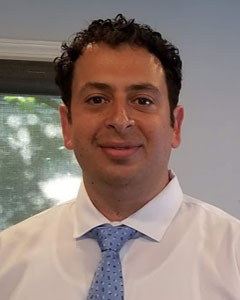When you have receding gums that affect both your oral health and your appearance, gum grafting comes to the rescue. One of the best Yonkers dentists and periodontists, ensures you have a successful gum graft recovery following gum recession surgery. Your periodontist comes highly recommended and is very experienced, which decreases your risk of gum graft failure.
Being told that you need a gum graft is upsetting, but don’t panic. It’s an extremely common dental problem. Gum grafting has come a long way, and it sounds worse than it is.
If your gums have receded to the point of needing gum recession surgery, gum grafting can protect your teeth. It also goes a long way toward maintaining the quality and appearance of your smile.
You may not have even noticed that your gums had receded, but your family dentist can point it out to you. It’s a gradual process in which the tissue that surrounds your teeth begins to pull away from your teeth. This process exposes more of your tooth and eventually the root of your tooth.
If left untreated, this condition even causes damage to the bone that supports your tooth. Since your dentist is also experienced in cosmetic dentistry, he notices even small changes in your mouth that you miss.
L. H.
Google Review
What to Expect: Gum Graft Types
There are actually three common types of gum grafts that your dentist at Park Avenue Smiles can custom-fit for your specific needs:
- Connective-tissue grafts are the most common method of treating root exposure. A small flap skin is cut into the roof or soft palate of your mouth. The tissue under the small flap is called subbepithelial connective tissue. This tissue is removed and attached to your gum to cover the exposed root. Then the flap of skin originally cut is stitched back into place.
- Free gingival grafts are similar to connective tissue grafts. But instead of making a flap and using the connective tissue, a gingival graft uses tissue directly from the roof of your mouth. Your dentist attaches it to the gum area being treated. If your gums are thin, this may be the graft chosen as additional tissue to enlarge your gums.
- Pedicle grafts use the gum tissue near the area being treated. The flap of gum tissue is called a pedicle. It’s only partially cut away so that it remains attached. Your gum tissue is then positioned over or down to cover your exposed root and sewn into place. This is typically the graft of choice if you have plenty of gum tissue around the affected area.
You may prefer to use graft material from a tissue bank instead of harvesting tissue from the roof of your mouth. In some cases, tissue-stimulating proteins promote your body’s own natural ability to grow bone and tissue. Your dentist can discuss which method will work best for you.
How Long is Gum Graft Recovery?
Gum graft recovery is not as bad as you think. You’re able to go home after the procedure. Your dentist gives you a mild sedative to help you relax. But you need to arrange for someone to drive you home.
Gum recession surgery causes some discomfort for a week or two. Soft, cool foods are recommended. The amount of pain you experience depends on the type of graft you have. If tissue is removed from your palate, you may experience discomfort similar to the pain you feel when you burn the roof of your mouth. But it tends to heal quickly. Any gum graft recovery pain is eased with over-the-counter anti-inflammatory medication. Alternatively, your dentist may prescribe pain medication following your gum recession surgery.
Gum Grafting: Vital Aftercare & Post-Operative Instructions
Gum graft failure isn’t common but is a possibility. You should call your dentist if you experience any of the following symptoms:
- Bleeding that won’t stop after you’ve applied pressure for at approximately 30 minutes
- Excessive pain, and more bruising or swelling than your dentist told you to expect
Gum graft failure can result from lack of proper care, so be sure to stay current with your dental checkups. The chance of experiencing gum graft failure are drastically reduced if you maintain a proper routine of dental hygiene and refrain from smoking.
Considering a Gum Graft? Here’s What You Should Know
Gum grafts are covered by most dental insurance plans. So, you only have to pay a small portion of the cost. If you don’t have insurance, the out-of-pocket cost varies based on how much work is needed. Our qualified dentists can discuss alternatives with you.
If you’re experiencing gum recession, call the leading dental expert in the Yonkers. He has the knowledge and expertise to ease you through the best gum treatment for your individual issues. Your oral health and your appearance matter, which is why you’re fortunate to have found a dentist who does both.
If you have receding gums, gum grafting might be the best solution for you. This type of dental surgery requires choosing a technique that fits your specific needs. Therefore it’s essential to entrust your gums to a highly-qualified dentist.
Our periodontists of Park Avenue Smiles are true specialists in the area of gingival tissue, who can help you achieve a healthy and attractive smile. Сontact our dental сlinic for a consultation, if you think that a gum graft procedure is your option.
Do you have any questions about the gum graft procedure? Would you like to schedule an appointment with the top-rated dentist and periodontist of Park Avenue Smiles? Please contact our dental center for a consultation with the gum graft specialist.

